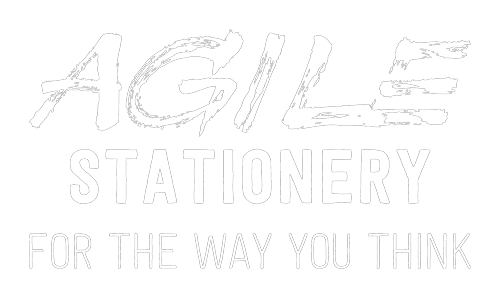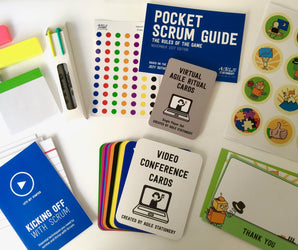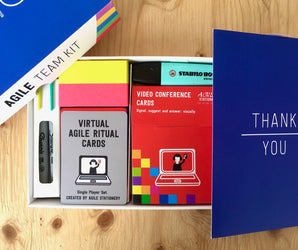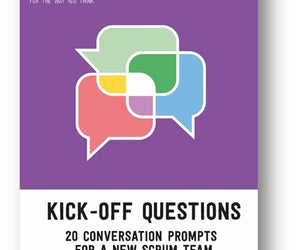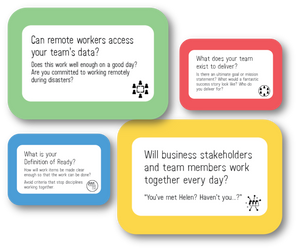We were joined by Laurence Wood for a demonstration of BETter a physical tool based on a card deck. Laurence's mission at William Hill is to run their Centre of Excellence for Disciplined Agile. BETter is his tool for supporting "Richer Retrospectives for High Performing teams".
The focus of the session was using physical tools during a remote retrospective. Laurence, like us, is a huge proponent of using real tangible items in retrospectives and workshop sessions. Our love of paper comes from the tight feedback loop and flexibility, for Laurence he loves that they start the right kind of conversations.
The hunch we all agreed on is that by bringing some flavour of those tangible tools back to remote retrospectives is that those benefits can be achieved once again.
Your Challenges
We decided to kick off by turning to a digital tool - Slido - to gather questions and count up votes. We wanted to reflect on what were the key challenges you faced. The two top voted submissions were:
- Getting meaningful and actionable output
- Team complaining about blockers from other teams rather than focusing on what they can improve about our own process.
- Remote Retro with no physical contact.
- No accountability/follow through on actions coming out of retrospective.
Matt and Gary won copies of Richer Retrospectives (the unbranded version of BETter) for submitting the top two questions.
Laurence shared a few key insights in reply:
Actionable actions
Choose one thing to focus on. The "Focus Card" is a feature of BETter. There is one of these in the deck, so you have to choose where to put it. Having fewer actions means it is more likely that the team will choose a genuinely valuable option, and are more likely to get it done.
External Blockers vs Own Processes
The card deck itself contains over 40 prompts and the focus is firmly of finding issues within the teams own control.
Accountability and follow through
Laurence repeated the observation that having fewer, or only one, action means there is more likely to be follow through. We also discussed the benefits of placing retrospective actions into the main workflow tracker (whiteboard, JIRA etc) and applying the same disciplines to them as other kinds of work.
Playing The Game
We broke out into 5 sessions. Three were moderated by Laurence, Devika and Simon, two more ran the session independently. Devika and Simon, focused on that tight feedback loop, streamed live video of their workspaces with real cards. Laurence and the others relied on photographs of a similar set up. Each had the four frequency cards across the top of the space - Rarely, Sometimes, Often, Always - and a prompt card.
Most sessions focused on two cards, as they were limited to ten minutes. These were great examples of the conversation starters in the deck:
- Our velocity is a little better than previously
- Our retrospectives identify the real issues we must address to improve our own performance
When we reconvened each of the teams present were able to report that they had deep conversations about why they felt their teams' performance was good or bad.
We had people that always had excellent retrospectives and those that felt retros were often shallow. We had people who's velocity tended to saw-tooth as they shifted from one functional area to another and others who felt it was actually flat. There was clearly plenty of potential to dive further into these observations.
We came together briefly to discuss the prompts we had been discussing and compare notes about the facilitation,the use of the second cameras and how we had found the game. To conclude, we broke out to decide where we would collectively put the Focus Card - what's the main issue for our software delivery team. it was a little harder to get consensus as we did not represent the same teams, but we quickly made a popular decision and moved on to discussing possible actions, which is exactly what we would hope to happen in real life.
The Second Camera Experience
Our facilitation of the session was based on BlueJeans' video conference platform, with two team members sharing a screen connected to additional cameras. These second cameras streamed to a window on our desktops that was then shared to the group via Share Screen.
Attendees could see the cards and a real human hand moving in the Shared Screen window. The owner of that hand was also visible in the speaker gallery window, at the same time. We felt this gave attendees a shared experience with a feedback loop that was as close to real-time as possible yet able to capture a degree of subtlety.
The technique allows for remote working teams to have a retrospective without shipping multiple copies to far flung locations.
One moment where this really excelled was during the final Q&A session when we wanted to discuss certain cards it felt entirely natural for someone to place those cards on the worktop and make gestures at them.
While we loved the output, the technology was a painful process. I have prepared a warts-and-all experience report on the technical aspects so you can benefit from our learning. In short: have a slide deck of photographs for back up, and buy an app.
We are delighted that this game has found a home in our Innovators Range - a mix of products manufactured by Agile Stationery or curated from third parties. Each of the products in this range offers a unique and fresh tool to solve pressing needs.
